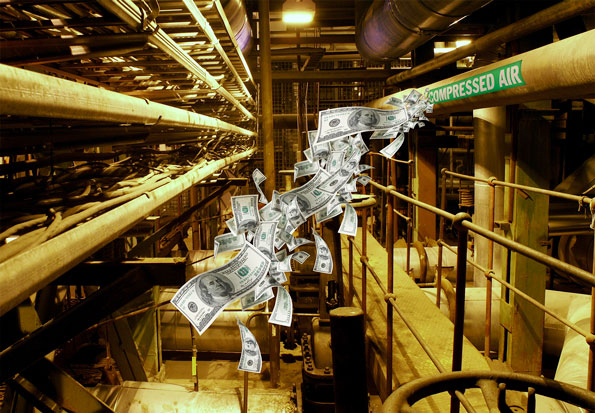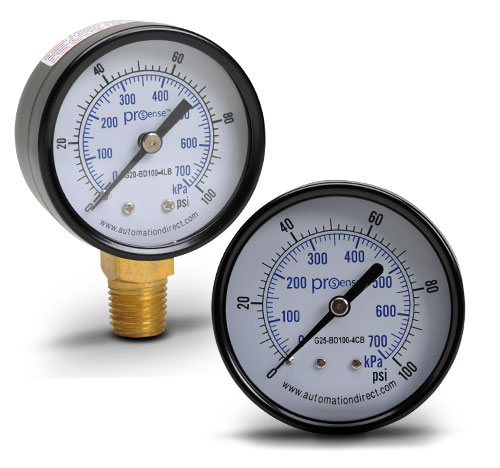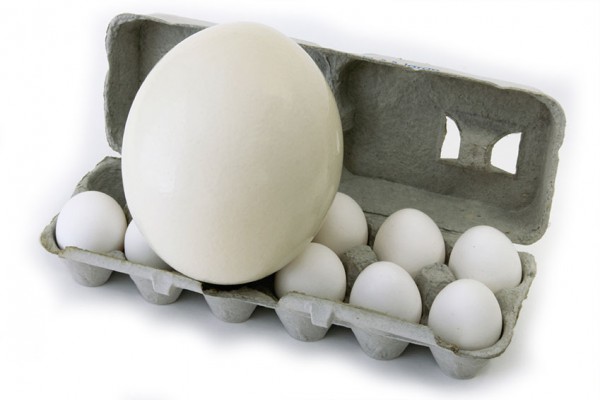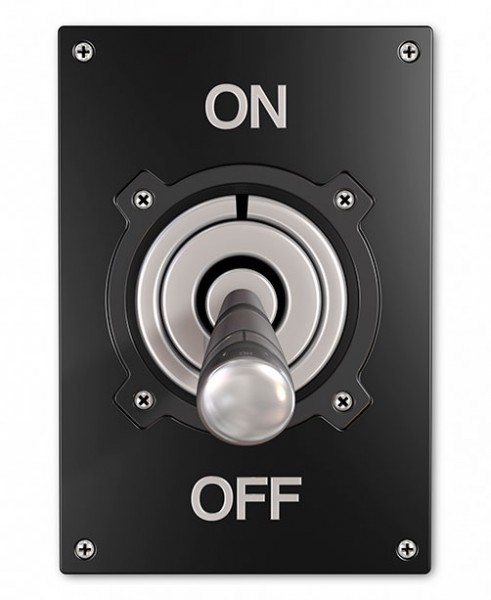Reducing energy consumption is a priority in almost every manufacturing plant and industrial facility, as no company can afford to throw money away using machines and processes that waste energy. Because pneumatic systems are abundant throughout manufacturing and account for a large share of a plant’s power costs, it is extremely important that they run efficiently.
Unfortunately, many users have the mindset that pneumatic systems are inherently inefficient, therefore overlooking opportunities for energy savings. In addition, some manufacturers of industrial equipment and robots tend to focus on ensuring the pneumatic systems perform their intended functions, and in the process neglect efforts to reduce operating costs. Fortunately, there are ways to improve the energy efficiency of pneumatic systems using tactics that range from better engineering decisions in the design stage, to adjustments and maintenance on existing systems. And by optimizing these systems, companies can reduce their compressed-air energy consumption by anywhere from 20 to 35%.
Minimize Leaks
Leaks are common and expensive in pneumatics systems. Statistics from the U. S. Department of Energy show the average manufacturing plant loses 30 to 35% of its compressed air due to leakage. The good news is many leaks can be prevented or repaired.
 Of the many points between the compressor and the load where leaks occur, valves and seals are two main areas for improvement. Deteriorated seals should be the first area to examine and remedy. Environmental conditions, such as temperature, moisture content and lubrication, all contribute to the leakage rate of a seal. Pneumatic systems in areas with high contamination risk can benefit significantly from an investment in resilient seals like Viton, Teflon or polyurethane.
Of the many points between the compressor and the load where leaks occur, valves and seals are two main areas for improvement. Deteriorated seals should be the first area to examine and remedy. Environmental conditions, such as temperature, moisture content and lubrication, all contribute to the leakage rate of a seal. Pneumatic systems in areas with high contamination risk can benefit significantly from an investment in resilient seals like Viton, Teflon or polyurethane.
Another consideration with leakage is proper valve selection. Selecting the best valve for the job can prevent unnecessary leakage and unnecessary cost. Certain valve designs, such as lapped-spool valves with metal seals, have inherent internal leakage that is constant while air is supplied to the valve. Nonetheless, it’s important to note that lapped spool and metal sleeve valve air consumption doesn’t vary during operation. On the other hand, installing valves with soft seals can significantly lower leakage on the front end, but a soft seal produces hundreds of times more leakage than the lapped spool-and-sleeve valve during an open crossover when the valve shifts. In this case, it is important to look at total air leakage over the whole operation being performed in order to determine which type of valve will optimize the energy usage.
Compressor Enhancements
After fixing leaks, compressors are the next biggest area for improvement. U.S. Dept. of Energy reported that manufacturers spend over $5 billion each year on energy for compressed air systems. This shouldn’t be surprising since they form the backbone of the pneumatic system. Manufacturers that optimize their compressed air supply systems have seen significant reductions in their energy consumption. Detailing the methods for increasing compressor efficiency is beyond the scope of this chapter. However, the Dept. of Energy offers guidelines for determining the cost of compressed air in a plant, as well as tips on how to reduce compressor energy usage.

Optimizing Pressure
As compressed air flows through typical circuits, air pressure drops due to changes in demand, line and valve-flow resistance, and other factors. But many of these losses are simply because the distance between the compressor or supply point and the actuator is longer than necessary. Designs that use the shortest tubing possible can reduce energy consumption as well as cycle times. Typically, tubing between control valves and cylinders should be less than 10-ft long. Longer lengths require more pressure so that force, speed, and positioning capabilities aren’t compromised.
Another way to eliminate unnecessary consumption is ensuring actuators use only the pressure needed to perform a task. Sometimes, operators on the plant floor increase supply pressure in the belief that it improves performance. However, all this does is waste energy and money. Installing sensors that monitor pressure, and pressure regulators that maintain correct settings, can keep pressure within the minimum and maximum parameters. Many engineers also design systems that deliver more pressure than needed to the actuator. Regulators that control pressure to individual pneumatic cylinders will increase energy efficiency, in many instances generating savings of up to 40%.
Regulate the Return Stroke
Another way to conserve energy is by supplying the correct pressure for an actuator’s return stroke. Most applications only move a load in one direction. However, many machines inefficiently use the same pressure for both the working and return strokes.
For example, a material-handling system that pushes boxes from one conveyor to another needs high cylinder force only in one direction. The working stroke may demand 100 psi to move a box, but the low-force return stroke only requires 10 psi. Using the same pressure in both directions wastes energy. Reducing the pressure on the return stroke saves 90% of the volume of compressed air. Because that conserves compressed air, a lot of energy is saved over the thousands of cycles that the action is performed. And regulating air pressure not only saves energy, it also minimizes wear on the pneumatic and related components. By reducing pressure for the extract stroke to only what is needed, the machine is not subjected to unnecessary vibrations and shock.
Another option for improving efficiency in processes with shorter strokes is to use a spring return actuator. The control valve in a spring return actuator ports the pressure (using the compressed air) for the working part of the stroke, and then exhausts the air. For the return stroke, the spring—or sometimes merely the weight of the mechanism—takes the cylinder back to the starting position.
A typical case where single-acting, spring-return cylinders can reduce energy demand involves presses. In this type of application, a cylinder pushes two items together such as a bearing into a housing, or a plug into a hole. The job demands a significant amount of force to press the parts together, but only a small amount to retract. This makes it a good candidate for energy savings by eliminating the return-stroke air consumption completely since the spring return can provide the force needed for retraction.
Proper Sizing
 It’s important to take the time upfront to correctly size the pneumatic system’s components because each component’s size affects other parts of the system. Buying smaller control valves may save money on the purchase price, but they will be more expensive over time. Smaller control valves will require the air compressor to work harder simply to get the proper pressure to the actuators, creating a long-term demand for more energy.
It’s important to take the time upfront to correctly size the pneumatic system’s components because each component’s size affects other parts of the system. Buying smaller control valves may save money on the purchase price, but they will be more expensive over time. Smaller control valves will require the air compressor to work harder simply to get the proper pressure to the actuators, creating a long-term demand for more energy.
Another common problem comes from oversizing the cylinders more than necessary. Some oversizing is necessary to compensate for pressure fluctuations and air losses; however, components that are far too large account for one of the biggest energy losses in a pneumatics system.
For instance, a 3-inch cylinder requires more than double the volume of air of a 2-inch cylinder. However, this much extra capacity may not be needed. To avoid grossly oversizing, it’s important to remember most loads and speeds require only 25% additional capacity to ensure correct operation. By selecting the right amount of oversizing, cylinder efficiency can be improved by as much as 15%. When factoring in the number of cylinders that will operate thousands of times over their life span, the savings from right sizing becomes significant.
To assist with the many calculations and considerations that go into properly sizing components—such as if the load is rolled or lifted—there are software packages, online calculators, and even an iPhone app that can assist with component sizing. By spending a little more time understanding the system’s true requirements, the savings can be substantial.
 Hit the ‘OFF’ Switch
Hit the ‘OFF’ Switch
Shutting down a machine when it’s not working seems like an obvious way to save energy. While some elements of a system, such as air bearings, can require pressure even when the machine is off, the required compressed airflow is usually much less than that needed during normal operations. However, many installations have no automatic way to reduce or stop airflow to idle machines. Reduced staffing often means that manufacturers can no longer send maintenance workers to manually turn off air to specific machines. Or sometimes workers don’t understand that an idle machine requiring pressure only needs a fraction of the pressure required during operation. These facilities can benefit from an automatic air reduction control package to lower the air pressure to necessary levels when the machine isn’t working. Typically, the cost of these devices is recovered within a few months.
Save Energy, Save Money
In the past, businesses were mainly concerned only with their pneumatic systems performing their job correctly. Little thought was put into correctly sizing components and making sure that only the pressure required was used. However, today’s businesses can’t afford to waste energy in any area of the plant. The good news is that with some time dedicated to determining the actual requirements of the pneumatic system and selecting the right components, plants can expect improvements in both energy efficiency and productivity.


